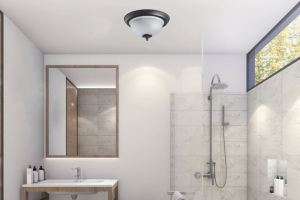The Importance of Lighting in Interior Design
Lighting is an essential aspect of interior design that often gets overlooked. Apart from illuminating spaces, lighting also affects the mood, ambiance, and functionality of a room. Thus, it is crucial to have the right balance of natural and artificial lighting that complements the décor and meets specific requirements. In this article, we will discuss some tips and tricks for the perfect illumination of your room.
Assess the Room’s Lighting Needs
Before selecting the lighting fixtures, it is essential to assess the room’s lighting needs. Evaluate your lighting requirements based on the room’s function, size, and design. Here are some factors to consider:
Function:
The room’s function determines the type of lighting you need. For example, the lighting needs in a bedroom differ from a kitchen or a study.
Size:
The room’s size affects the number of lights you need. A small room may require fewer fixtures than a larger one.
Design:
The room’s design influences the lighting placement, style, and color temperature.
Once you assess the room’s lighting requirements, you can select the appropriate fixtures.
Types of Lighting Fixtures
There are three types of lighting fixtures: ambient, task, and accent lighting.
Ambient Lighting
Ambient lighting is the primary source of illumination in a room. It provides overall illumination to create a comfortable and inviting ambiance. The most common ambient lighting fixtures are:
– Ceiling-mounted fixtures, such as chandeliers, pendants, recessed lights, and flush mounts.
– Floor lamps, table lamps, and torchieres.
Task Lighting
Task lighting provides focused illumination for specific tasks, such as reading, cooking, or working. The most common task lighting fixtures are:
– Desk lamps, under-cabinet lights, and pendant lights for kitchens.
– Floor lamps or table lamps for reading nooks.
Accent Lighting
Accent lighting adds drama and interest to a room by highlighting a particular object or area, such as artwork, plants, or architectural features. The most common accent lighting fixtures are:
– Recessed lights or track lights for highlighting artwork or walls.
– Directional spotlights or wall sconces for highlighting architectural features.
Matching Lighting Fixtures with Room Décor
The lighting fixtures you choose should complement the room’s décor and design. Here are some tips to help you match lighting fixtures with room décor:
Style:
The lighting fixtures should be in harmony with the room’s style. For example, a modern chandelier may not fit in a traditional setting.
Color:
The lighting fixtures should match the room’s color palette. For example, a bold-colored lamp may look out of place in a neutral-colored room.
Size:
The lighting fixtures should be proportionate to the room’s size. For example, a large chandelier may overwhelm a small dining room.
Placement:
The lighting fixtures should be positioned in the right places to complement the room’s design. For example, a light fixture placed above a dining table should be the right size and style to match the table’s shape and size.





More Stories
The Elegance of Spiral Staircase Chandeliers: A Perfect Blend of Form and Function
The Elegance of Sconce Hallways: Illuminating Your Passages with Style
Illuminate Your Space with Adjustable Wall Lights in the UK